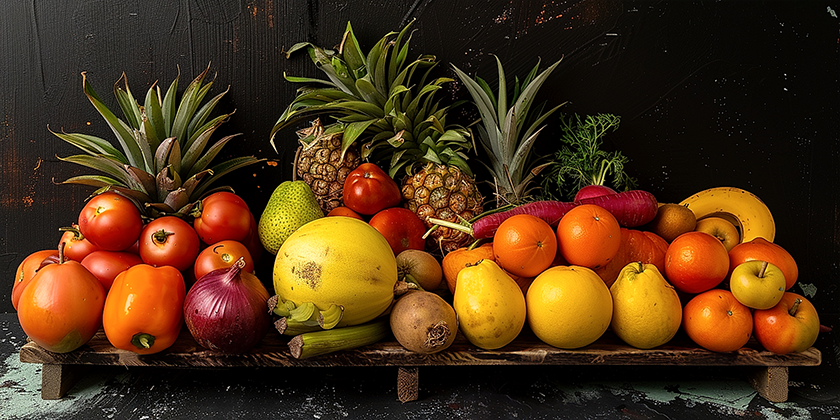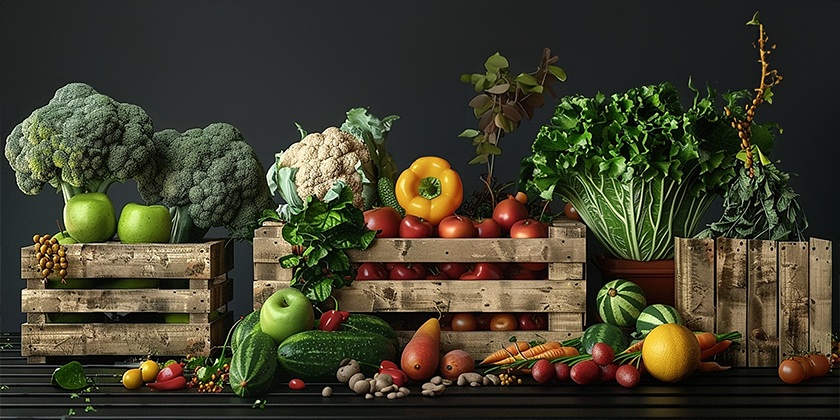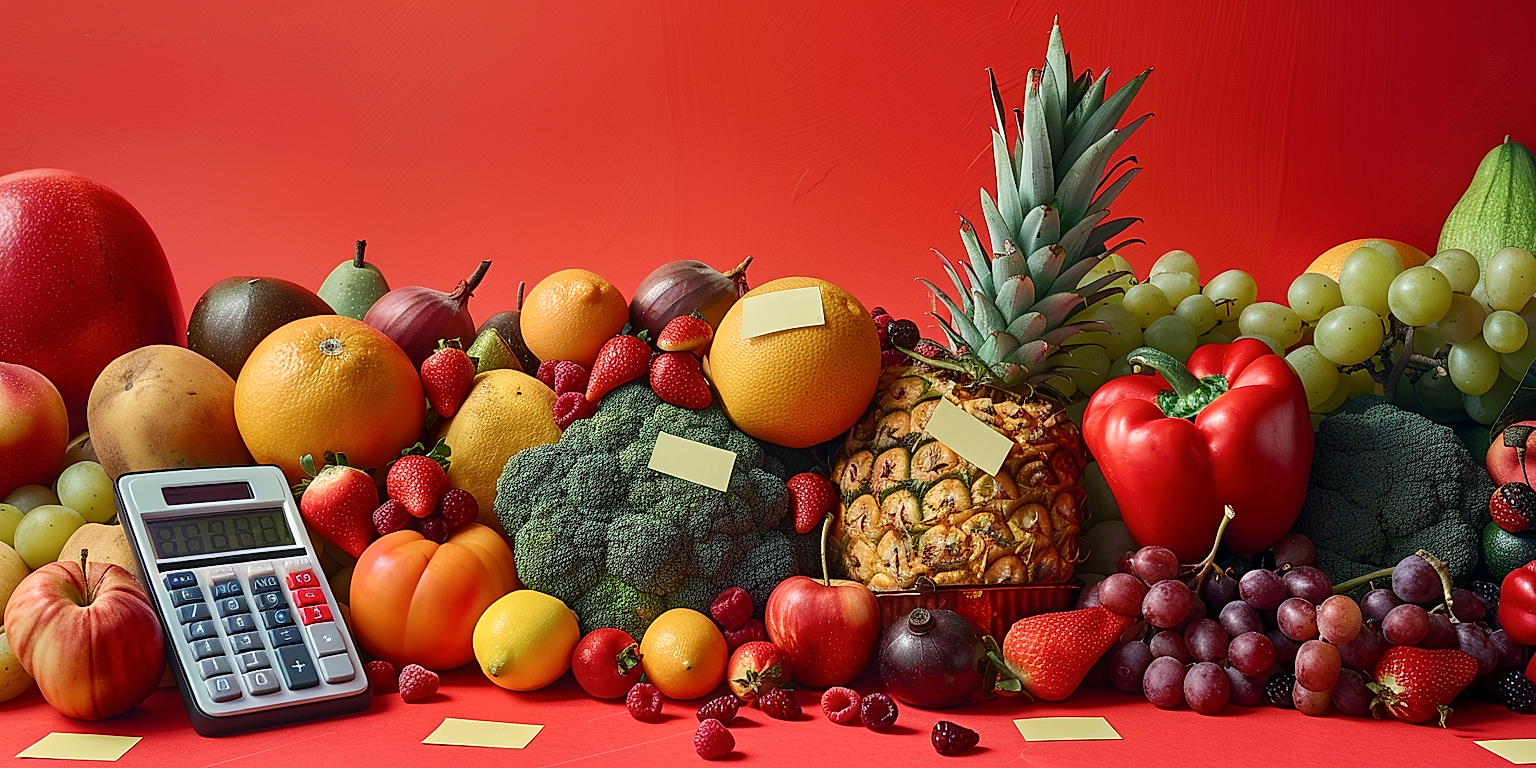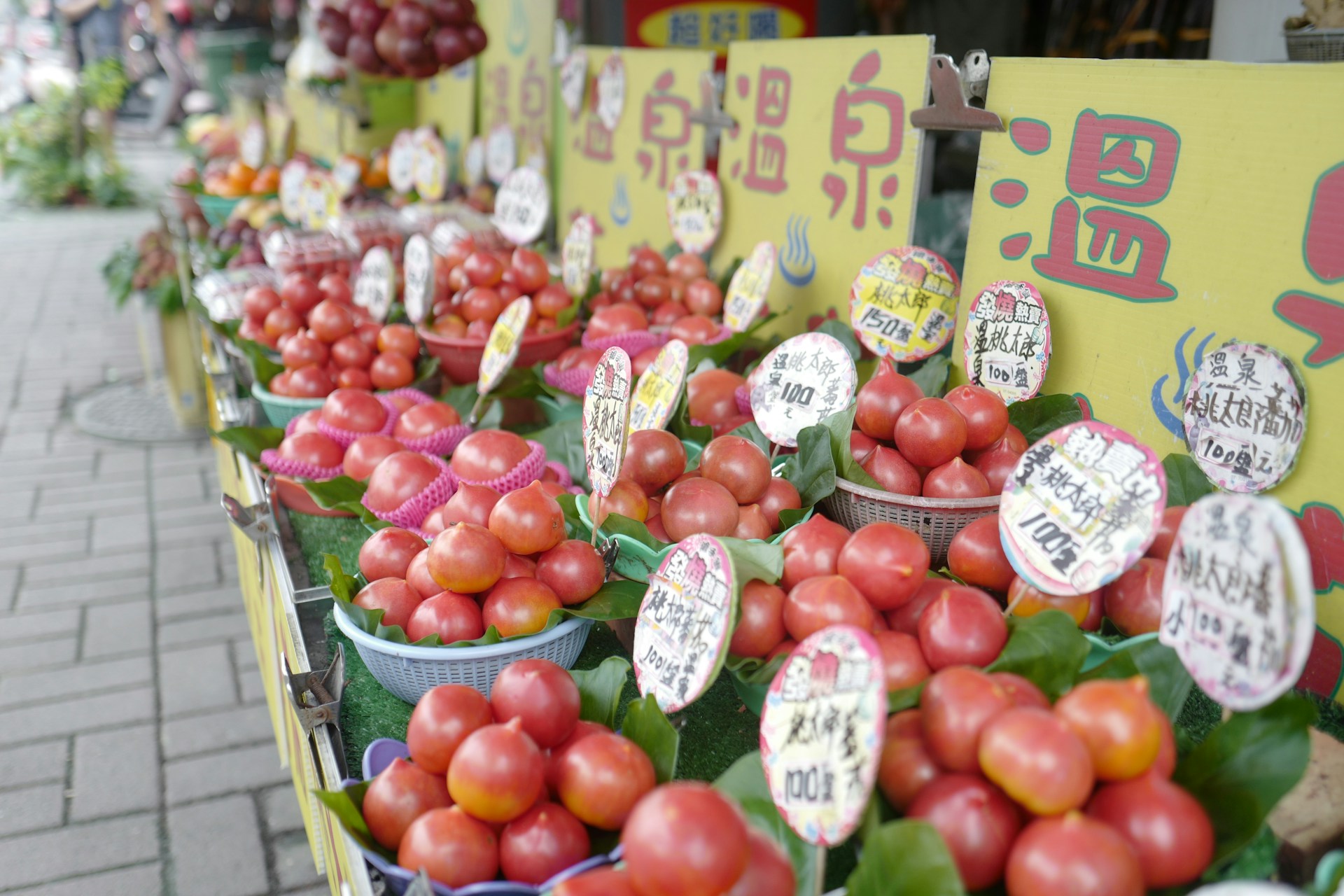In any retail business, price is a determining factor for success.
It directly influences consumer behavior and ultimately, the bottom line.
Especially, in the context of produce retail, setting the right price can be a delicate art with several variables at play.
Such factors include seasonality, perishability, and market competition.
This blog article will articulate a range of pragmatic pricing approaches that have been proven effective in this sector.
Our aim is to enlighten retailers with strategic insights that can enhance profitability and foster long-term growth.
Contents
Pricing Strategies That Work For Produce Retail
1. Competitive Pricing
Competitive pricing is one of the most effective pricing strategies that retailers in any sector, including produce retail, can employ.
At its core, competitive pricing involves adjusting your pricing to industry standards or to what your competitors are offering.
It doesn’t necessarily mean matching or undercutting your competitors’ prices, but rather, positioning your pricing in such a way that provides value and appeal to your customer base.
The critical task here is to carry out comprehensive market research, to understand what other players in the market are pricing their produce at, and what the typical customer is willing to spend.
For produce retail, freshness, variety, and quality of produce are all key factors that can justify a slightly higher price point.
Competitive pricing is not about being the cheapest, but about providing the best value for your customers at a price that allows your business to thrive.The advantage of competitive pricing is that it makes your pricing structure more adaptable and dynamic based on changes in the market, whether that’s due to seasonal produce availability, inflation, or shifts in consumer behavior.
Tracking competitors’ pricing enables you to quickly make necessary adjustments to your own prices to remain attractive to customers while still maintaining profitable margins.
This strategy also allows for differentiation and positioning based on your products’ unique selling propositions, letting you charge a premium for organic produce or rare/exotic fruits and vegetables.
It’s essential, however, to remember that in implementing a competitive pricing strategy, operational costs must be covered to maintain profitability.
Also, while pricing competitively, it’s crucial not to jeopardize the perception of quality associated with your brand by lowering prices excessively.
Don’t forget to communicate the value you offer clearly to your customers, so they understand why your produce may be priced slightly higher than a competitors’, for example.
It’s about finding that sweet spot–a price that customers are willing to pay for the quality, selection, and service your produce retail business provides.
Ultimately, competitive pricing, when correctly implemented, can significantly enhance your market position and profitability as a produce retailer.
By considering not only your competitors’ prices but also the quality, freshness, and variety of your produce, along with your unique brand proposition, you can adjust your prices in a way that ensures business sustainability and customer satisfaction.
Overall, competitive pricing is a dynamic, adaptable strategy that fruit and vegetable retailers can use to keep their pricing in line with what their market expects, while also making a fair profit.
2. Psychological Pricing
The concept of psychological pricing is a pricing tactic that takes advantage of customers’ emotional responses to certain price points.
According to research, prices ending in the number 9, like $1.99, are often perceived by consumers as being significantly less expensive than they truly are.
Psychological pricing strategies have been proven to increase sales and consumer interest.
This pricing strategy, beyond its effectiveness, can also contribute to the overall perception of your brand, mastering this tactic can greatly attract or repel your customers depending on how you apply it.
Applying psychological pricing in your produce retail business can help create a perception of value and affordability.
Round numbers, for instance, are often used for high-end products to emphasize the quality and exclusivity of the product.
On the other hand, precise pricing such as $5.97 can give the impression of a great deal, which is why it is commonly used in discount stores.
In the world of produce retail, where prices are often low to begin with, psychological pricing can be extremely effective.
By using strategies like charm pricing, which involves reducing the price of a product by one cent, you can create the illusion of a bargain and entice customers to purchase more.
Another form of psychological pricing is prestige pricing, where the price is set at a high point to mark the product as a luxury good.
While this may seem counterintuitive, it can help attract a certain demographic of customers who equate price with quality.
However, caution must be taken when implementing prestige pricing in a produce retail business, as it may deter budget-conscious customers.
A subtle but effective use of psychological pricing in produce retail is promoting bulk purchases through price differentiation.
For instance, selling a single apple for $0.5 while selling three for $1 can encourage customers to buy more than they initially intended.
Strategically incorporating psychological pricing into your pricing strategy can indeed have a significant impact on your sales and the overall success of your produce retail business.
3. Discounted Pricing
The discount pricing strategy is a common and effective avenue businesses take, especially in the produce retail sector.
This method primarily involves reducing the price of a product to increase its appeal to potential customers.
By creating a sense of saving, customers are more likely to purchase discounted items even if they weren’t initially planning to.
Strategically using discounts has proven to be a potent tool in driving customer engagement and loyalty in produce retail.
The success of discount pricing, however, is dependent on a variety of factors including the type of product, market condition, consumers’ purchasing behaviour, and those factors must be thoroughly considered.
For instance, premium quality produce typically doesn’t require heavy discounts to sell, while bulk produce items might benefit significantly from volume discounts.
Understanding your market and customer base is a crucial step in effectively implementing a discount pricing strategy.
This helps to ensure that your discounts are attractive and beneficial to your target customer, ultimately driving sales and helping achieve your business goals.
Temporary discounts, such as seasonal or holiday sales, are a common practice in the retail industry and can bring in an influx of customers.
However, discount pricing should not be seen as a long-term strategy as it can erode profit margins if not managed carefully.
Furthermore, excessive discounting may also lower the perceived quality and value of your produce, causing customers to be reluctant to pay full price.
Therefore, while discount pricing could significantly increase demand and move inventory quickly, the usage should be thoughtful and strategic.
One effective way to use discount pricing is to offer loyalty or membership discounts.
This not only provides a benefit to the customer but also encourages repeat business and customer loyalty.
Another widely adopted method is volume discounting, where the price per unit decreases as the quantity purchased increases.
This encourages bulk purchasing and is especially effective in the produce retail industry where products often have a short shelf life.
Ultimately, the success of a discount pricing strategy hinges on balancing between boosting sales volume and maintaining profitable margins.
A well-executed discount pricing strategy can significantly boost a business’s profits and expansion in the market.
4. Tiered Pricing
Implementing a tiered pricing strategy in a produce retail setting brings a more personalized shopping experience for customers based on their purchasing behavior and preferences.
In essence, tiered pricing structures allow businesses to offer multiple price points for a same product with different variants, promoting customer engagement and improving bottom-line performance.
At the core of a successful tiered pricing model is the ability to provide exceptional value at each price point, encouraging customers to feel justified in their investment while maximizing revenue for the retailer.
Understanding customer needs and values, as well as a detailed cost analysis of the product, are key in setting effective tiered prices.
It is a strategy that can meet consumer demand at different price levels and expand the reach of the product to a wider range of customers, increasing both sales volume and profit margin.
With tiered pricing, businesses can experience a boost in their profitability, as there’s an increased chance that customers will opt for a higher tier because of perceived added value.
As customers in the produce retail industry are driven by both quality and price, offering tiered pricing allows you to meet the demands of different consumer segments.
This strategy may not only prompt the consumers to purchase more, but it may also expand your customer base as your offerings become accessible to different budget levels.
A tiered pricing structure can be particularly effective in the produce retail industry, where local and organic products are often priced higher than conventionally farmed products.
By offering different price points, customers are able to choose the product that best fits their budget and lifestyle, improving customer satisfaction and loyalty.
Tiered pricing can also help manage inventory levels by encouraging purchases of surplus products, reducing waste, and ensuring better stock rotation.
Implementing a tiered pricing strategy requires careful planning and execution.
It’s necessary to determine the cost of the product, the needs and values of the customers, and a clear understanding of how to communicate the value in each tier effectively.
Just as every pricing strategy, it’s necessary to regularly review and adjust the tiered pricing strategy based on company objectives, customer feedback, and market trends.
Tiered pricing can be a smart way to boost sales and profits in the produce retail industry as it offers a way to cater to the different demands of consumers, provided that it’s implemented correctly.
Efficiently maximizing the use of a tiered pricing strategy can lead to a win-win situation for both the business and the customers.
5. Bundle Pricing
One of the effective pricing strategies for retail produce is bundle pricing.
This strategy involves combining several products or services into one comprehensive package and selling it for a lower rate than if items were bought individually.
Bundle pricing not only increases revenue but also moves slow-selling items, especially in the produce sector where products have a limited shelf life.
These bundles should always be assembled thoughtfully for the customer to convey a sense of value and convenience.
For instance, a retailer could bundle a combination of fruits and vegetables that are often used together in recipes to offer a valued-packed, meal-prep bundle.
Effective grouping and packaging can work wonders in making the customer feel like they’re getting a fantastic deal.
Moreover, when inventory needs to be shifted before it spoils, bundle pricing can be an excellent tool for inventory management.
Bundle pricing creates a win-win situation for both the retailer and the customer- the retailer sells more products, and the customer gets more for their money.
If implemented correctly, bundle pricing can drive customer loyalty, as customers will feel they’re getting value for money and will be more likely to return.
When setting a price for the bundle, its important to price it at a rate that is attractive to customers, but that also covers the cost of all the products offered.
Also, it’s necessary to remember that the perceived value of the bundle must exceed the cost for the consumer to make the purchase.
This strategy is also particularly useful during the seasonal abundance of produce, as it helps dispose of excess inventory and ensure that nothing goes to waste.
For instance, in the autumn, a retailer could bundle together a selection of fresh apples, pears, and plums or other autumn harvest produce.
Finally, it’s essential to ensure that the presentation of bundled goods is appealing, as this significantly influences the customer’s purchase decision.
To conclude, bundle pricing is an advantageous pricing strategy to consider for a retailer in the produce industry, which requires turnover of inventory in a timely manner.
6. High-Low Pricing
In the realm of produce retail, the concept of high-low pricing holds immense significance.
This strategy involves a retailer setting prices at a higher level than the normal market price, and then discounts them heavily during sales events.
For seasonal produce, high-low pricing offers a clever way of moving stock without accumulating waste.
The primary aim of high-low pricing is to create a sense of urgency in the minds of the customers, compelling them to make a purchase.
The goal of implementing a high-low pricing strategy in produce retail is to generate a sense of excitement and urgency around sales events, encouraging customers to buy more during these times.
During the high price period, some shoppers are willing to purchase the product regardless of the cost, thus bringing in a higher profit margin for those units sold.
Meanwhile, the discounted period is designed to fast-track sales, helping to clear the shelves for new stocks.
This pricing strategy is especially effective for perishable items like fruits and vegetables, minimizing waste and maintaining freshness within the store.
High-low pricing also contributes to the overall perception of the store, making it seem like a value-for-money retail outlet.
However, produce retailers should be cautious about when and how to use high-low pricing.
Too frequent sales and heavy discounts may erode the value perception of the produce, making shoppers believe that the high prices are inflated, negatively impacting the overall brand image.
Moreover, continuous use of high-low pricing could lead to reduced profit margins, especially if customers prefer to wait for the sales period before making their purchases.
It also requires strategic planning, as retailers must ensure that supply meets demand during the sales events to avoid disappointing customers.
Nonetheless, when executed correctly, high-low pricing can lead to increased foot traffic, faster inventory turnover, and heightened customer satisfaction, making it a valuable tool for produce retail.
7. Seasonal Pricing
One of the effective strategies in retail, particularly in the produce sector, is Seasonal Pricing.
This pricing strategy takes into account the seasonal fluctuations in the demand and supply of different kinds of produce available in the market.
When certain fruits or vegetables are in season, their supply in the market increases, leading to a decrease in their prices.
On the other hand, during off seasons when certain produce is scarce, their prices often skyrocket.
As a produce retailer, adjusting your prices according to the seasons can help you maintain a steady flow of income and keep your business thriving.
By implementing Seasonal Pricing, you can match your prices with the market trends and ensure your produce is priced at competitive rates throughout the year.
One advantage of this strategy is that it encourages customers to buy in bulk during seasons when prices are lower.
This not only helps you clear your stock but also increases your sales.
Another advantage is that Seasonal Pricing protects you from potential losses during off seasons.
By raising your prices during these times, you can ensure that you are still making a profit despite the lower sales volume.
However, it’s important to note that effective implementation of Seasonal Pricing requires an intimate understanding of your market.
You need to know when different kinds of produce are in season and when they are not, as well as how these changes affect their prices in the market.
Furthermore, you also need to understand your customers and their purchasing patterns.
Do they buy more during certain seasons? Or are their purchases relatively constant throughout the year?
These are some of the questions you need to answer to effectively implement Seasonal Pricing in your produce retail business.
Overall, Seasonal Pricing is a powerful tool that can help you maximize your profits in the produce retail business.
8. Geographical Pricing
Geographical pricing is a strategy where businesses set their prices based on the location of their customers.
This approach can be incredibly effective for produce retailers due to differences in transportation costs, currency values, taxes, and even customer buying behaviors across different regions.
For instance, a fruit retailer may charge higher prices for exotic fruits in regions where those fruits are not easily accessible or commonly grown.
Conversely, the same retailer can offer those fruits at lower prices in regions where they are a part of the local produce.
The key to successful geographical pricing is understanding your customers, their local market conditions, and the logistical costs involved in delivering to them.
In essence, geographical pricing enables produce retailers to optimize their profits by adjusting their prices to suit the economic realities of different regions.
Of course, implementing geographical pricing requires a robust and flexible pricing system and solid market research.
Produce retailers must be able to gather and analyze data on regional buying patterns, customer preferences, local competition, and cost factors.
They also need to be aware of any legal restrictions or requirements related to pricing in different regions.
Some businesses might even consider using dynamic pricing models that adjust prices on the fly, based on changes in demand or cost.
It is essential to communicate any differences in pricing to customers in a clear and transparent manner to avoid potential backlash or misunderstandings.
Also, businesses should regularly review and adjust their geographical pricing strategy as market conditions and cost factors change.
By doing so, they can ensure their pricing remains competitive and profitable, and aligned with their overall business objectives.
However, while geographical pricing can be highly effective, it is not without challenges.
Administrative hurdles, variations in regulations, currency fluctuations, and changes in local market conditions can all impact pricing decisions.
Yet, with careful planning and execution, geographical pricing can be a highly valuable strategy for produce retailers.
9. Luxury Pricing
In the landscape of pricing strategies for produce retail, luxury pricing presents its own unique approach.
Primarily, luxury pricing is often used for high-end or premium products, and may seem counterintuitive in the produce retailer’s market.
However, if appropriately used, it can prove beneficial in elevating a company’s brand and creating a niche market.
With luxury pricing, retailers set their prices significantly higher than their competitors.
The high cost is intentionally designed to accentuate the quality and exclusiveness of the product.
This appeals to a subset of customers searching for high-quality, premium produce items that are deemed worth the extra spend.
Reinforcing the aspect of quality, exclusivity, and superior service is essential to effectively implement luxury pricing.
In the context of produce retail, luxury pricing might apply to organic, locally sourced, or exotic fruits and vegetables.
For instance, customers might be willing to pay a premium for apples harvested from a renowned orchard, or for a rare, exotic fruit that’s hard to find.
This pricing strategy aids in creating a luxury perception around the brand.
It’s important to note, however, that simply setting a high price doesn’t automatically denote luxury.
Achieving a luxury status requires careful attention to the brand’s marketing and presentation, product quality, and overall customer experience.
For luxury pricing to work, the product and the brand should deliver a value that justifies the high price.
Luxury consumers appreciate attention to detail, exceptional service, and a shopping experience that matches the product’s perceived luxury status.
If these conditions are met, not only can retailers attract a specific consumer segment, but also aim for higher profit margins.
However, the implementation of luxury pricing requires careful assessment of the market, understanding of the targeted consumers, and ability to provide an exclusive experience.
Despite being a less conventional method in the produce retail industry, luxury pricing can be an effective tool to differentiate the brand and cater to a specific, high-end consumer market.
10. Freemium Pricing
Freemium pricing is a popular pricing strategy used in the digital marketplace, but it can also be adapted for use in produce retail.
At its core, freemium pricing involves offering basic products or services for free while charging for premium or specialized ones.
For example, a retail grocery store could offer free basic cooking classes to all customers, while charging for advanced classes or special guest chef sessions.
The main objective is to attract customers with the free offerings and then upsell them on the premium products or services.
This approach to pricing builds goodwill with customers and can create a loyal customer base that is willing to pay for premium offerings.
The success of the freemium pricing strategy largely depends on the quality of the free offering and the perceived value of the premium ones.
If customers do not see the value in the premium offerings, they are unlikely to pay extra for them.
However, if the free offerings are of high quality, it sets the expectation that the premium offerings will also be worthwhile.
This strategy requires careful planning and consideration, as it is critical to strike a balance between the free and premium offerings.
If the free offerings are too good, customers might see no need to upgrade to the premium ones.
Conversely, if the free offerings are poor, customers may not trust the quality of the premium offerings.
The location and positioning of free and premium products within the store can also significantly impact the success of the freemium pricing strategy.
The free products could be placed in a highly visible area near the store’s entrance, encouraging customers to enter and explore the store further.
The premium products can then be placed in a more exclusive area of the store, radiating a sense of prestige and exclusivity.
This layout can create a clear pathway of progression from the free products to the premium ones, making the upsell process more intuitive and less forced.
Despite its challenges, if executed correctly, the freemium pricing strategy can be a powerful tool for increasing store traffic, building customer loyalty, and encouraging customers to spend more.
It offers a unique and innovative approach to pricing in the produce retail industry, setting your store apart from the competition.
The Bottom Line
Overall, the utilization of various pricing strategies is a critical aspect of business that can significantly impact overall profitability and consumer appeal.
Whether applying competitive, psychological, discounted, tiered, bundle, high-low, seasonal, geographical, luxury, or freemium pricing, each strategy offers its own unique benefits and considerations.
Businesses must meticulously analyze their target audience, market trends, and product or service value to identify and apply the most effective pricing model.
Ultimately, the right pricing approach can foster customer loyalty, enhance market presence, and drive revenue growth.




